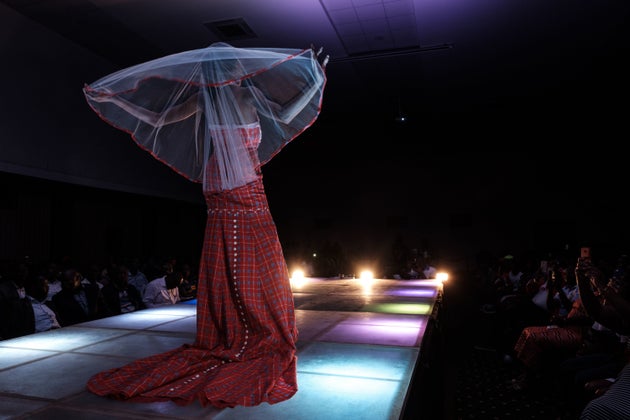
The fashion industry is not famous for being environmentally friendly. Clothes are mass produced, and the constantly changing nature of trends mean clothes are thrown away at an astonishing rate. However, in recent years there has been an increase of charity and vintage shopping, and major high streets brands have launched sustainable fashion collections. Is this a sign that sustainable fashion is the future?
Sustainable fashion is not new, particularly with designer brands. Stella McCartney, arguably the champion of ethical fashion, has been advocating ‘Respect for Nature’ for years. This includes sourcing materials from sustainable sources such as forest viscose and cashmere. Other high-end fashion brands, such as Vivienne Westwood, have made collections out of recycled materials and have used their platforms to raise awareness about the importance of sustainability within the fashion industry, with campaigns such as No Fun Being Extinct.
This campaign supported the conservation charity Cool Earth, and was funded by Westwood herself. The campaign included some of the industry’s biggest names, with models such as Kate Moss and Lily Cole. It highlighted issues surrounding the expenditure of the World Bank, who failed to spend 90% of the funds allocated to conserving the rainforests. The successful campaign highlights not only designers using sustainable materials, but also the incredible platform that fashion can be for awareness on global and climate issues.
It is not enough for just the high-end fashion brands to be moving towards sustainability, as only a very privileged few can afford to shop there. But the influence that it has on the industry is clear: there is a trickle-down effect of designer labels impacting high-street brands.
Now, more high-street brands are beginning to introduce sustainability into their collections. H&M’s Conscious Exclusive is now entering into its 7th year and uses recycled silver and fishnets to create simple pieces that would fit into any wardrobe. Inspired by the Swedish arts and crafts movement, these minimalist designs aim to introduce conscious fashion into millions of wardrobes. Similarly ASOS has introduced recycled jeans and a ‘Made in Kenya’ collection that offers clothes made and sourced ethically.
Arguably however, this is not enough. The fashion industry is the second largest polluter in the world, second only to the oil industry, and is also one of the highest ranked industries for water waste. Last year alone, 12.8 million tons of textiles were discarded, with disastrous consequences for the environment. Scraps of fabric that accumulate after cutting are not always reused but often thrown away, a practice which is tolerated across the industry. Not to mention that the dyes and chemicals used to colour and clean clothes have massively contributed to the pollution of the world’s river systems and oceans.
So while there has been a rise in sustainable fashion and certain parts of the industry are making an effort to become more sustainable, there needs to be an industry-wide movement to significantly reduce the waste that the textile industry produces. This change also has to come at every level: from high-profile designers to the enormous textile workshops in China. Fashion brands should also be held accountable for the responsible sourcing of their clothes, making sure that it is ethical not only for the people involved, but also the environment.
By Marnie Woodmeade